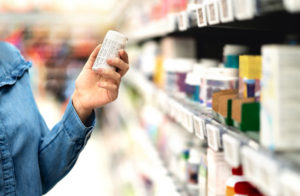
If you’ve been following COVID-19 stay at home orders, you, like close to half of North Americans, are probably getting insufficient vitamin D.
And that is not a good thing.
The “sunshine” vitamin is essential for several bodily processes that keep you healthy. It works both as a vitamin and hormone that’s created when sunlight hits the skin. From there, it is absorbed and formed into a useful form of cholesterol.
Just how useful?
Some of the ways optimal vitamin D can give your health a boost are:
- Regulating the production of the thyroid hormone to help with weight, mood, sleep cycle, and immunity.
- Bolstering the immune system by improving the expression of white blood cells. There is even some preliminary data to suggest adequate levels of vitamin D may lower the risk for COVID-19.
- Fighting inflammation and reducing health conditions caused by chronic inflammation
- Promoting a more diverse and beneficial population of gut bacteria.
- Stronger and more resilient bones.
The key word is optimal. When you’re getting enough vitamin D, you may experience these benefits. But what is optimal?
The answer depends on who you ask. Generally speaking, optimal levels of vitamin D in the blood are in the 45-80 nanograms/milliliter range (ng/mL). To learn your levels, blood testing is required.
Some doctors may advise patients to go on mega-dose supplementation protocols to restore vitamin D levels, sometimes going higher than 10,000 IU per day. This is not a sustainable dosage and would not be continued for more than a couple of months.
For others, smaller doses in the 1,000 – 2,000 IU range is safe and suitable.
The best source of vitamin D, however, is unprotected direct exposure to sunlight. But that can come with a whole host of concerns.
Some experts recommend allocating sunshine exposure based on your complexion.
- Very light-skinned people with high susceptibility for burning should stick to about 10-15 minutes per day.
- People with a bit of a darker complexion may be good for 15-20 minutes.
- People with dark complexions may be able to go for an hour or longer.
For most, spending a little bit of time outside and proactively taking a supplement can help keep vitamin D levels right where you want them.